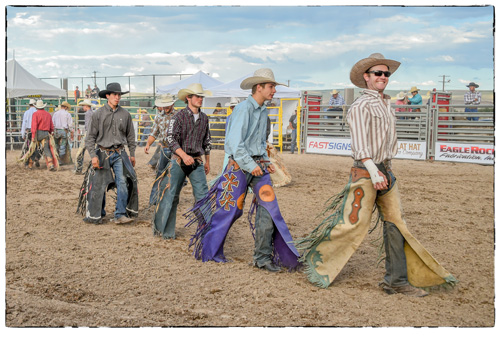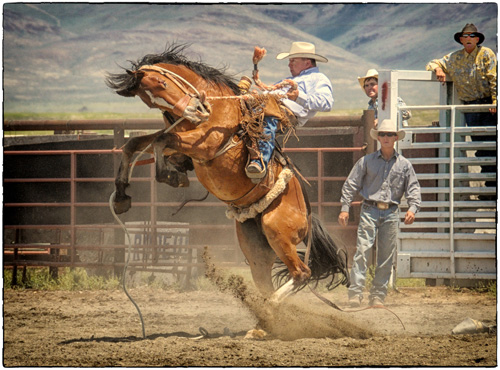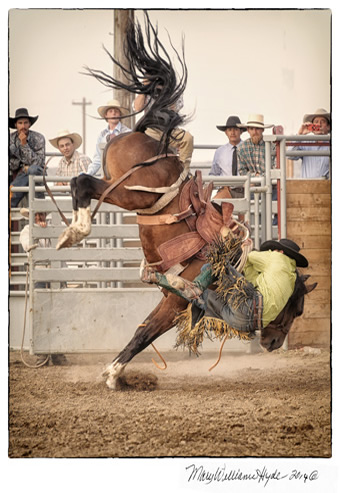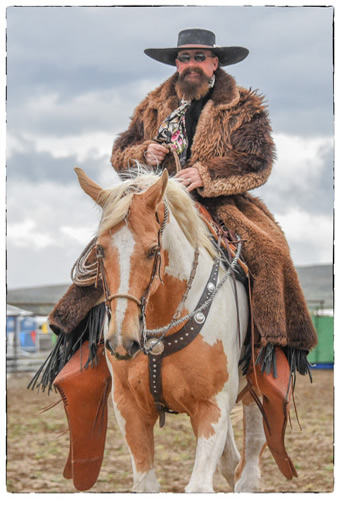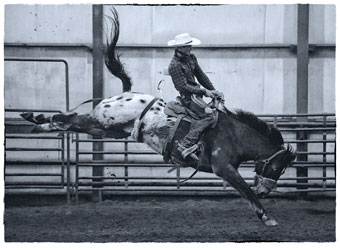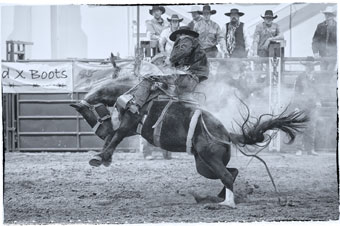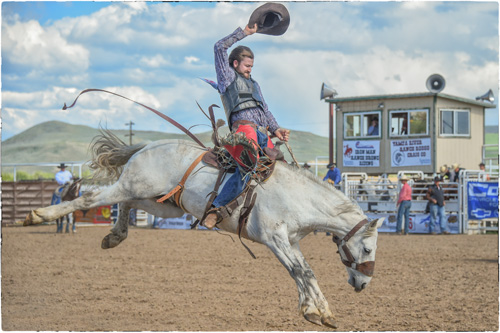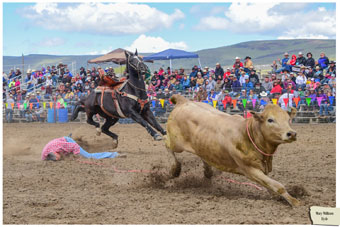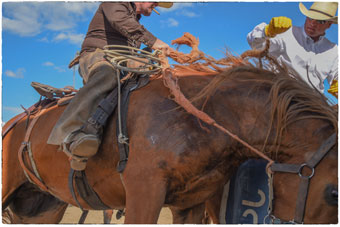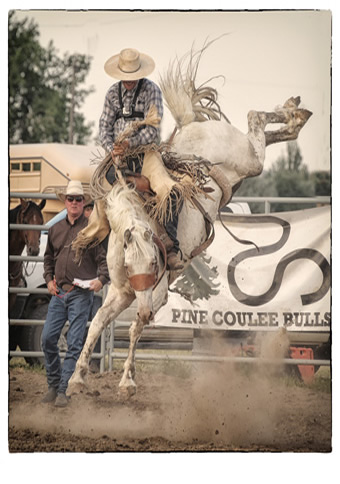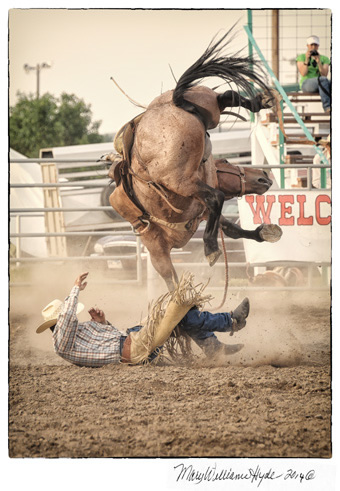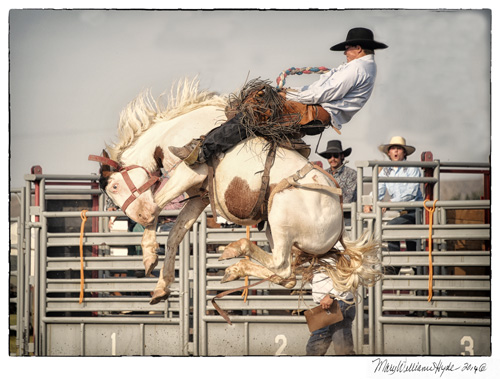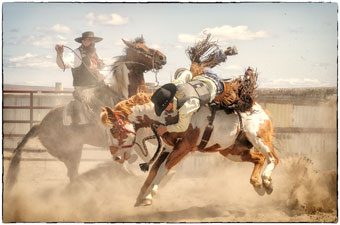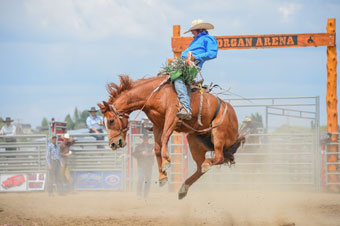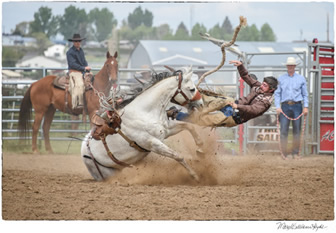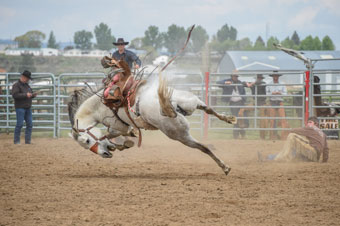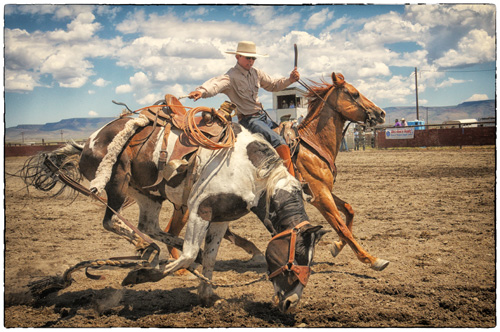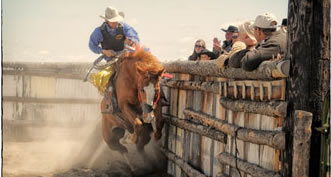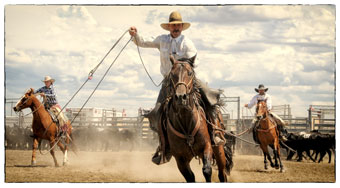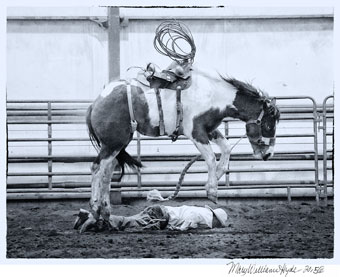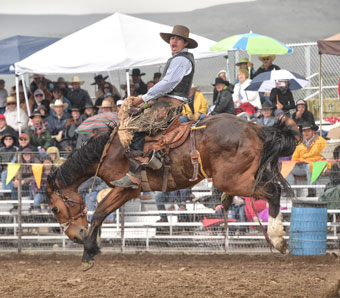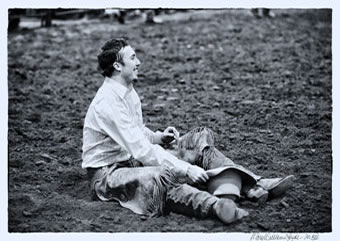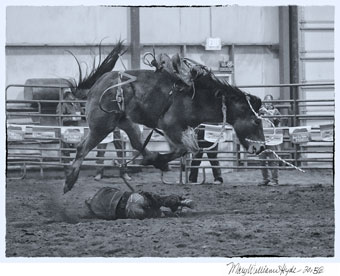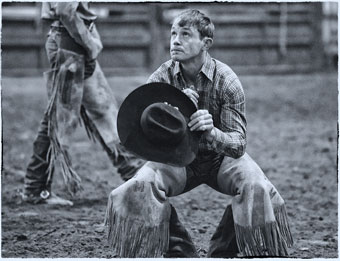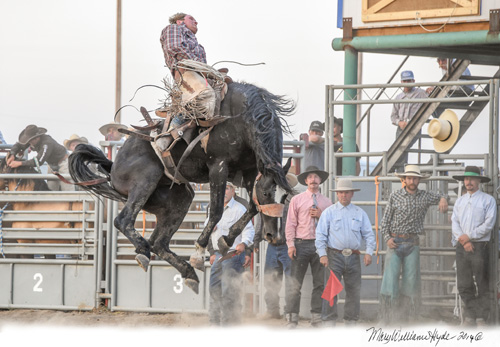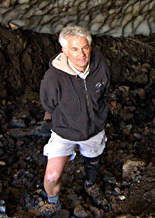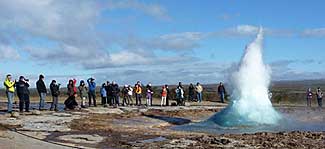 |
High on Adventure |
||||||||||||||||||||||||||||||||||||||||||||||||||||||||||||||||||||||||||||||||||||||||||||||||||||||||||||||||||||
JANUARY/FEBRUARY 2022, OUR 26TH YEAR |
|||||||||||||||||||||||||||||||||||||||||||||||||||||||||||||||||||||||||||||||||||||||||||||||||||||||||||||||||||||
Growing up on her family’s BK Ranch near the tiny Southeastern Oregon community of Beatty, a young Mary Hyde learned and lived the ranching lifestyle. Part of her fond memories are going to ranch rodeos, rodeos where real-life cowboys show their skills.
“They don’t look like Hollywood,” Hyde says of the buckaroos, men and women taking a break from their ranch work, who compete in events that often mimic their day-to-day chores. “These are people who do a lot of riding for work. This a part of the West people don’t know about.”
Hyde, 76, has been documenting ranch rodeos for decades. Unlike professional rodeos, ranch rodeos mostly feature team events using skills used in everyday ranch life, such as team roping, tie-down steer roping, and even trailer-loading. For ranch bronc riding, for example, riders use their own working saddles and hang onto his or her rope.
In ranch rodeos, teams of cowboys or cowgirls from different ranches compete against each other in events based on their everyday work. Ranch rodeos differ from the better known PCRA (Professional Rodeo Cowboys Association) style rodeos because ranch rodeo contestants are not professional rodeo cowboys who tour from event to event with possible lucrative paydays but, instead, are usually full-time ranch hands who compete in annual ranch rodeos for fun and for bragging rights. Ranch rodeo events mostly mimic tasks commonly performed on a ranch, and their equipment and tack are those used during everyday ranch work. Instead of competing as individuals, the contestants in ranch rodeos often compete as a team representing the ranch they work for.
Will James Roundup, Hardin, Montana
“Everybody you see in my photographs are ranch people, people who work on ranches. These are people who are still riding horses almost every day of their working lives,” Hyde says of her focus. “This is the West I am looking for, people in the old-style rodeos.”
Because of her ranching background and early exposure to ranch rodeos, Hyde is admittedly biased. She regards pro-rodeos as “too predictable, they’re uninteresting to me.” She finds ranch rodeos as more authentic. In the bronc riding, for example, “The horses are younger and wilder. The stock is wild and usually fresh off the range. They’re not jump-and-kick. They’ll go sideways or kick.”
Glen Shelley's Mother's Day Ranch Bronc Riding, Burns, Oregon Hyde is also a fan of traditional big loop roping, where competitors use 50- to 85-foot-long ropes. Once horses are caught, the long ropes allow ropers to carefully slow a horse down instead of jerking them down. This latter is a visually more dramatic method used in pro-rodeos that can injure animals. “Having good horse-roping and -handling skills is an essential part of what Great Basin buckaroos need for managing the large herds of horses typical of the big desert ranches, where lots of horses are needed to ranch-work seven days a week. Horse-roping events showcase these skills.”
It took several years to gain the confidence of ranchers, but Hyde is now a fixture at events around the West. Among her favorite ranch rodeos are those in Hardin, Montana; Burns, Oregon; and McDermitt and Winnemucca, Nevada. Ranch rodeos on her 2022 calendar include Big Loop Rodeo in May, McDermitt Ranch Rodeo in July, and Jefferson State Stampede in Montague, California, in August.
Along with photographing ranch rodeos, brandings and related activities, Hyde in recent years has placed an emphasis on wildlife and waterfowl. But, because of her background and her own years of riding and working horseback, ranch rodeos, with their wild and unpredictable action, are close to her heart – and part of her life. “I think history is important,” Hyde says of the fragile, some say dying, ranch traditions. “This is why I’m doing this. This is an historical record of a period of time. It’s not that I just go see ranch rodeos. With my photography I can share them with the world.”
To Contact Mary Hyde
|
|||||||||||||||||||||||||||||||||||||||||||||||||||||||||||||||||||||||||||||||||||||||||||||||||||||||||||||||||||||
